| Coenagria | |
|---|---|
| Scientific classification | |
| Domain: | Eukaryota |
| Kingdom: | Animalia |
| Phylum: | Arthropoda |
| Class: | Insecta |
| Order: | Lepidoptera |
| Superfamily: | Noctuoidea |
| Family: | Noctuidae |
| Genus: | Coenagria Staudinger, 1892 |
| Coenagria | |
|---|---|
| Scientific classification | |
| Domain: | Eukaryota |
| Kingdom: | Animalia |
| Phylum: | Arthropoda |
| Class: | Insecta |
| Order: | Lepidoptera |
| Superfamily: | Noctuoidea |
| Family: | Noctuidae |
| Genus: | Coenagria Staudinger, 1892 |

The International Code of Zoological Nomenclature (ICZN) is a widely accepted convention in zoology that rules the formal scientific naming of organisms treated as animals. It is also informally known as the ICZN Code, for its publisher, the International Commission on Zoological Nomenclature. The rules principally regulate:

The Pterophoridae or plume moths are a family of Lepidoptera with unusually modified wings, giving them the shape of a narrow winged airplane. Though they belong to the Apoditrysia like the larger moths and the butterflies, unlike these they are tiny and were formerly included among the assemblage called "microlepidoptera".
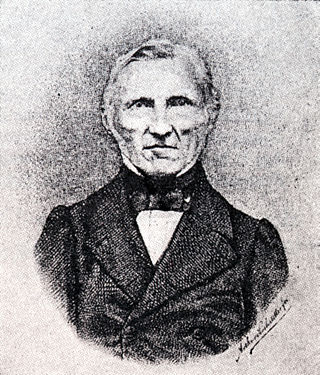
Philipp Christoph Zeller was a German entomologist.

The Lymantriinae are a subfamily of moths of the family Erebidae. The taxon was erected by George Hampson in 1893.

Neopseustidae is a small family of day and night-flying "archaic bell moths" in the order Lepidoptera. They are classified into their own superfamily Neopseustoidea and infraorder Neopseustina. Four genera are known. These primitive moths are restricted to South America and Southeast Asia. Their biology is unknown.
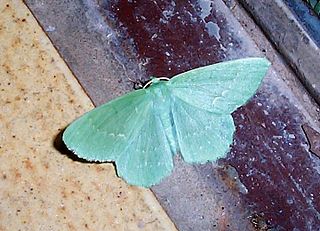
The Geometroidea are the superfamily of geometrid moths in the order Lepidoptera. It includes the families Geometridae, Uraniidae, Epicopeiidae, Sematuridae, and Pseudobistonidae. The Geometroidea superfamily has more than 24,000 described species, making them one of the largest superfamilies inside the order Lepidoptera. The monotypic genus Apoprogones was considered a separate geometroid family of the Apoprogonidae by a minority, but is now subsumed under the Sematuridae.
Sir George Francis Hampson, 10th Baronet was an English entomologist.
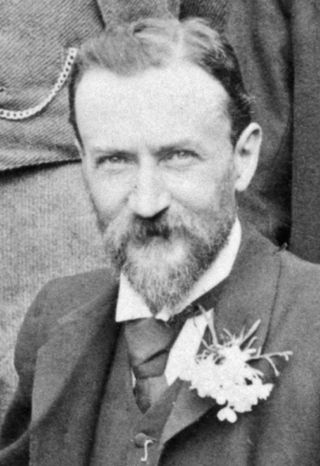
Arthur Gardiner Butler F.L.S., F.Z.S. was an English entomologist, arachnologist and ornithologist. He worked at the British Museum on the taxonomy of birds, insects, and spiders.

Coleophora is a very large genus of moths of the family Coleophoridae. It contains some 1,350 described species. The genus is represented on all continents, but the majority are found in the Nearctic and Palaearctic regions. Many authors have tried splitting the genus into numerous smaller ones, but most of these have not become widely accepted.
Anomoses hylecoetes is a species of primitive hepialoid moth endemic to Queensland and New South Wales, Australia . It is the only species in its genus Anomoses, which is the only genus in the family Anomosetidae.

Eupterotidae is a family of insects in the order Lepidoptera with more than 300 described species.

The Batrachedridae are a small family of tiny moths. These are small, slender moths which rest with their wings wrapped tightly around their bodies.
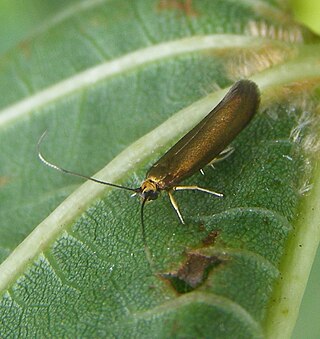
Roeslerstammiidae is a family of insects in the order Lepidoptera. The family arose from the taxonomic uncertainty of the genus Roeslerstammia Zeller, 1839, which was assigned to different families. The genus Roeslerstammia was removed from the Yponomeutidae Stephens, 1829, and placed in the Amphitheridae Meyrick, 1913, which in consequence became a junior synonym of Roeslerstammiidae. Consequently, Roeslerstammiidae comprises the Palearctic genus Roeslerstammia, as well as the Oriental and Australasian genera that form part of the Amphitheridae.

Glossata is a suborder of the Lepidoptera, containing all members that have a coilable proboscis; i.e., it includes all butterflies and the vast majority of moth species. The only non-Gloassatan moths are in the suborders Aglossata, Heterobathmiina, and Zeugloptera.
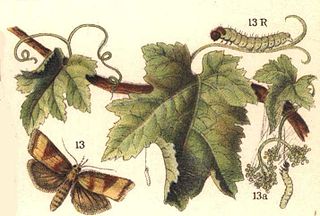
The Sparganothini are a tribe of tortrix moths.

The Thyatirinae, or false owlet moths, are a subfamily of the moth family Drepanidae with about 200 species described. Until recently, most classifications treated this group as a separate family called Thyatiridae.

Eois is a genus of tropical moths in the family Geometridae. It was first described by Jacob Hübner in 1818. Caterpillars of Eois species are most commonly green with darker markings, but species with fully dark caterpillars also exist. They are specialized feeders associated with Piperaceae species, with sparse additional records on Chloranthaceae species. Adults are typically small, with diverse wing shape, color and patterning across the genus.

Gracillariinae are a subfamily of moths which was described by Henry Tibbats Stainton in 1854.
The Metarbelidae are a family of the Cossoidea also called the carpenter or goat moths, and is sometimes treated as a subfamily, Metarbelinae of the Cossidae. No synapomorphies are shared with the Cossidae based on adult morphology. The family Metarbelidae was first described by Embrik Strand in 1909.
Eugene Gordon Munroe was a Canadian entomologist who discovered numerous species of insects. He worked for the Insect Systematics and Biological Control Unit, Entomology Division in Ottawa, Ontario, Canada.